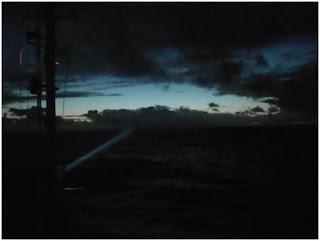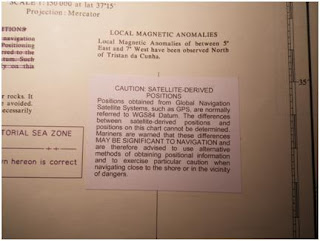Another quiet watch this morning, although a flash of inspiration has led me explore a completly new topic for my dissertation.
The second engineer showed myself and the other cadet around the engine room this afternoon, pics and explanations below.
More painting this afternoon.
As with most merchant vessels, there is no starter motor for the engines because the capacity is too large to crank over. Instead they are started with compressed air being forced into the cylinders to kick it over. These are the tanks containing that compressed air.
We produce our own fresh water from seawater. Seawater is sucked into these evaporation units, that are heated using the hot cooling water from the main engines, to allow this to boil the seawater, the pressure is lowered within the EVAP to decrease the boiling point of the water. Each unit can produce approximately 14t a day of fresh water.
The ship, unlike a lot of other merchant ships burns marine diesel, it is much cleaner than normal heavy fuel but it still requires pre filtering. This is one of the centrifuges for the diesel, the clean diesel is then pumped into the service tanks ready to be used in the engines.
Gearbox. There are two main engines on board, they are coupled via a single gear box and drive one propeller shaft. We have a controllable pitch propeller which is good for manoeuvrability. The engines spin the shaft at a constant 158rpm, if more speed is required; the central computer alters the pitch of the propeller to generate it.
One of two diesel generators on board, there is also a shaft generator, this meets all the day to day power requirements but if more power is needed for the thrusters etc then the computer will bring these generators online.
One of two main engines, you can see the turbo charger on the left of the pic. Output is 2200Kw @720 rpm. Daily consumption is approximately 7t of diesel or 5mpg.
This is the main switch board, where all the electrical power is distributed for the ship.
Finally, the steering gear. The rudder stock is the central stainless steel structure. There is a small needle on the front with a scale for angle indication, if the linkage up to the bridge is lost, the ship can be steered locally from within the steering gear room.


















































